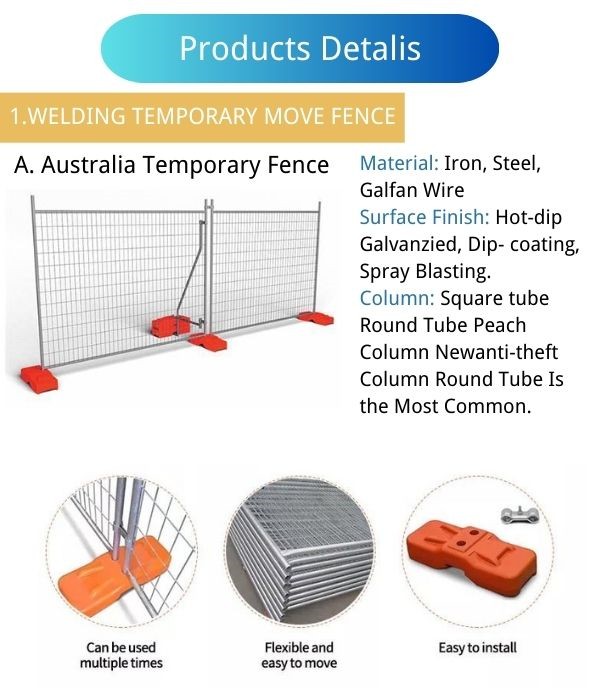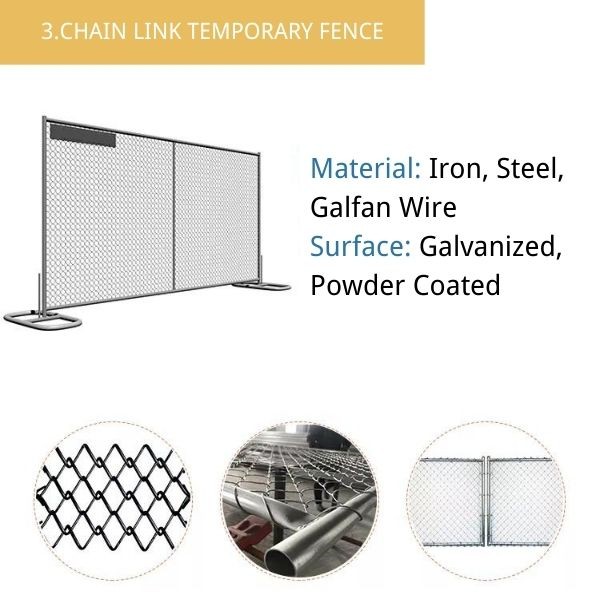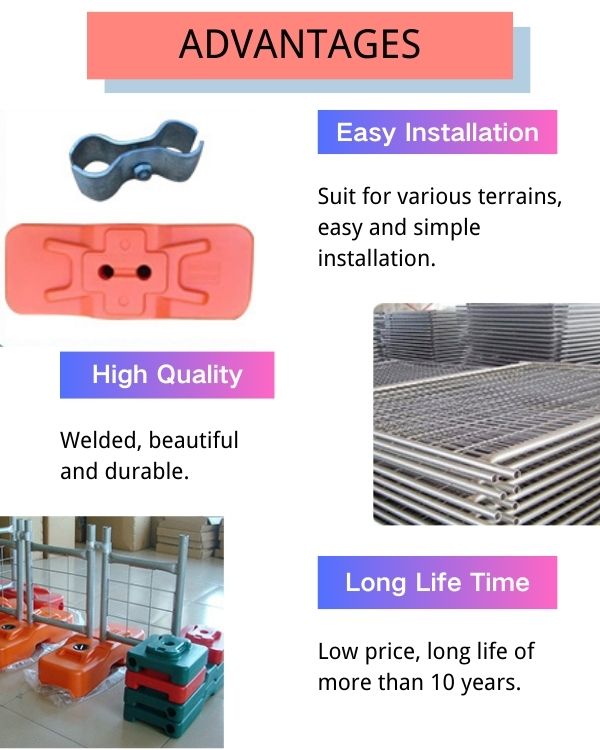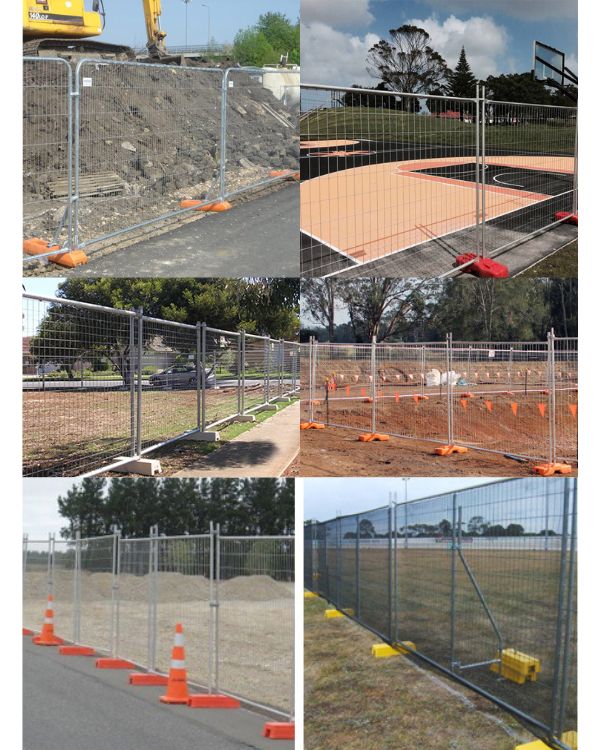Introducing the Australian Standard Temporary Fence, a reliable and durable solution designed specifically for professionals in need of secure and versatile fencing. Compliant with the rigorous Australian standards, this temporary fence guarantees utmost safety and functionality in construction sites, events, and public spaces. Crafted from premium quality materials, it boasts a robust structure that withstands harsh weather conditions and prevents unauthorized access. With its easy installation and customizable options, this temporary fence offers a flexible solution to meet various site requirements. Trust in the Australian Standard Temporary Fence to provide the utmost security and peace of mind for your professional needs.
The Australian standard for temporary fencing is outlined in AS 4687-2007, which provides guidelines for the design, installation, and maintenance of temporary fencing systems. This standard covers various aspects of temporary fencing, including the materials used, structural requirements, and safety considerations.
Some key requirements outlined in the standard include:
1. Materials: Temporary fences should be made of durable materials, such as galvanized steel, to ensure they can withstand environmental conditions and provide adequate security.
2. Height and dimensions: Temporary fences should have a minimum height of 1.8 meters and a maximum mesh opening size of 50mm x 50mm to prevent unauthorized access.
3. Stability and wind resistance: Temporary fences should be designed to withstand wind loads and should have appropriate bracing or anchoring systems to ensure stability.
4. Gates and access points: Temporary fences should have gates or access points that are secure and can be locked to control entry and exit.
5. Safety considerations: Temporary fences should be designed to minimize the risk of injuries, such as sharp edges or protruding objects.
It is important to note that specific regulations and requirements for temporary fencing may vary depending on the state or local government authorities. Therefore, it is advisable to consult with local authorities or a professional temporary fencing provider to ensure compliance with all relevant regulations.
Specification
| Temporary fence |
| Mesh panel | Hole size | 50×50mm, 50×150mm, 60×150mm, 100×200mm |
| Wire diameter | 2.8mm-4.0mm |
| Panel width | 2.1m, 2.4m, 3.0m |
| Frame | Pipe size | Ø25mm-48mm, black pipe or galvanized pipe |
| Wall thickness | 1.2mm-2.5mm |
| Whole height | 1.8m, 2.1m |
| Accessories | Plastic base: The fully enclosed plastic base can be filled with sand cement; Hollow plastic base can be cast concrete cement in hollow part. |
| Iron base: Rectangular base or plate base and tube products welding |
| Connection | Regular fence accessories, clips |



Benifits
1. Safety: Australian standard temporary fences are designed to meet the highest safety standards. They are made from sturdy materials and are built to withstand harsh weather conditions, ensuring the safety of workers and the general public.
2. Easy installation: Temporary fences can be quickly and easily installed, saving time and effort. They can be easily moved and adjusted as needed, making them a flexible solution for various construction sites or events.
3. Security: Temporary fences provide a secure barrier, preventing unauthorized access to construction sites or event areas. This helps to protect valuable equipment and materials from theft or vandalism.
4. Versatility: Australian standard temporary fences can be used for a wide range of applications, including construction sites, events, festivals, sports events, and more. They are available in various sizes and configurations to suit different needs.
5. Cost-effective: Temporary fences are a cost-effective solution compared to permanent fencing. They can be rented or purchased as needed, eliminating the need for long-term investment in permanent fencing.

Application
1. Construction sites: Temporary fences are used to secure construction sites and keep unauthorized personnel out. They help to prevent accidents and ensure the safety of workers and the public.
2. Events and festivals: Temporary fences are used to create boundaries and control crowd movement at events and festivals. They help to maintain order and ensure the safety of attendees.
3. Sporting events: Temporary fences are used to create barriers and separate spectators from the playing area during sporting events. They help to prevent unauthorized access and maintain crowd control.
4. Roadworks: Temporary fences are used to create a safe work zone during road construction or maintenance. They help to protect workers and guide traffic flow.
5. Demolition sites: Temporary fences are used to secure demolition sites and prevent unauthorized entry. They help to ensure the safety of workers and the public.
6. Temporary storage areas: Temporary fences can be used to create secure storage areas for equipment or materials on construction sites or other temporary projects.
7. Crowd control: Temporary fences are used to manage and control crowds in various settings, such as concerts, parades, or public gatherings. They help to maintain order and ensure the safety of attendees.
8. Public safety: Temporary fences can be used to cordon off hazardous areas, such as construction zones, damaged buildings, or unstable structures. They help to prevent accidents and protect the public from potential dangers.

